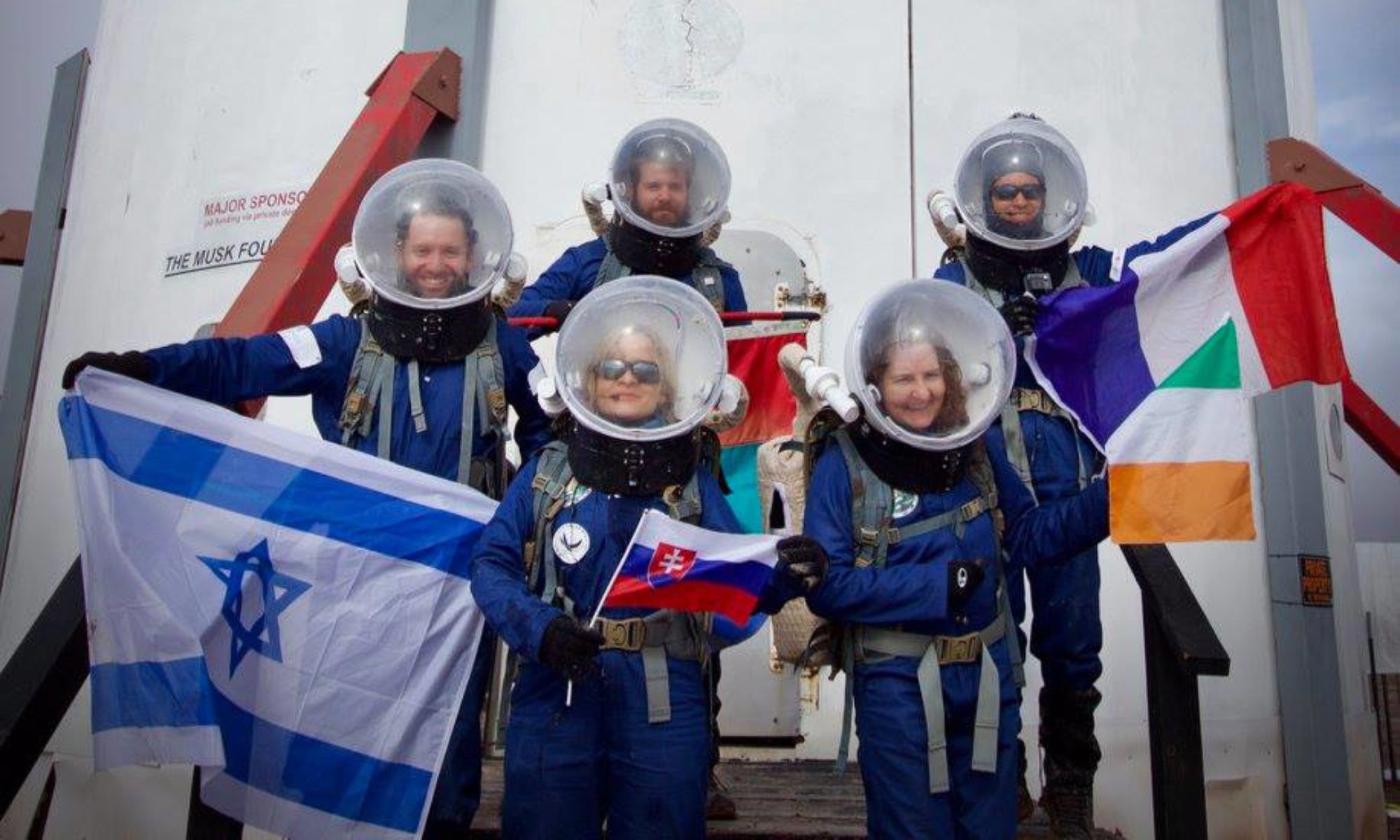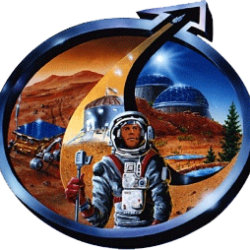Sol: 7
Title: Martian Sunday
Author: Izabela Shopova, Crew Journalist
We made it through our first week on Mars. And celebrated Sunday with a very relaxed plan for the day. Well, relaxed by the crazy standards of Mars. Our crew engineer Judi repaired the leaking sink in the kitchen with the help of the XO, Caitie, the crew biologist watered the plants and planted new seeds in the GreenHab, we all did house chores and wrote in our journals.
In the afternoon we did another EVA – this time without our faithful companions – the rovers. Instead of riding them on the road, we took off on foot and explored the area around the Hab, looking for hydrous minerals in the dried river beds and on top of the ridge. We found so many seashells, a whole martian sea of sea shells, crunching under our feet, piling up on the side of the hill. The sunset light made the canyons below look like a multi-layered cinnamon and strawberry cake.
Back in the safety of the Hab we were uploading photos after the EVA , when crew biologist Caitie went to the GreenHub to water the plants, but when we called her on the radio she didn’t respond. Jennie and I went to check on her and found our crew biologist lying on the ground. We immediately initiated an emergency response by calling Hab on the radio and assessing the unconscious crew member. Long story – short: Catie was assessed and brought to safety inside the Hab when the rest of the crew finally revealed that it was all just an emergency response simulation that they had planned in secrecy. They all played their roles with gusto and conviction, so it was a great relief to find out that Caitie was well. HSO provided us with glowing feedback for our appropriate response and we had a quick overview of the first aid protocol before dinner.
Sunday also marked the end of my time with Paro. At dinner we took our last photo together. From this evening Jennie will be spending time with him and I won’t be allowed to cuddle him anymore. Next week will be a tough one.

